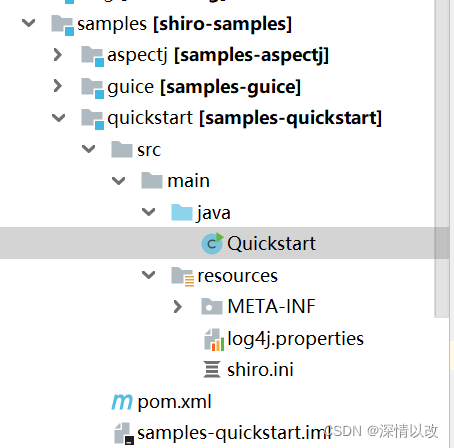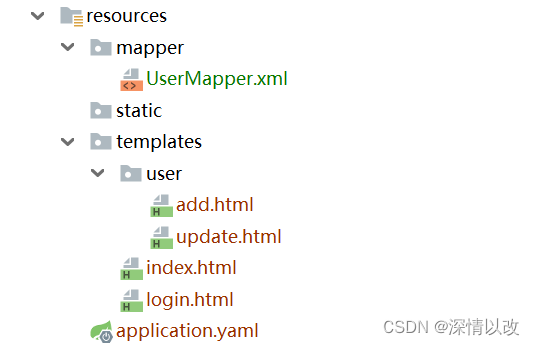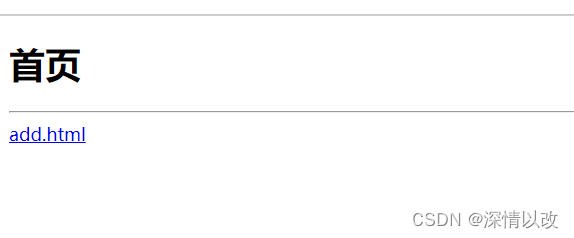Springboot-Shiro基本使用詳情介紹
Apache Shiro官網:https://shiro.apache.org/spring-boot.html.
一、依據官網快速搭建Quickstart

1.1 配置pom.xml依賴
<dependency> <groupId>org.apache.shiro</groupId> <artifactId>shiro-core</artifactId> <version>1.7.1</version> </dependency> <!-- configure logging--> <dependency> <groupId>org.slf4j</groupId> <artifactId>jcl-over-slf4j</artifactId> <version>1.7.21</version> </dependency> <!--調用日志框架--> <dependency> <groupId>org.slf4j</groupId> <artifactId>slf4j-log4j12</artifactId> <version>1.7.21</version> </dependency> <dependency> <groupId>log4j</groupId> <artifactId>log4j</artifactId> <version>1.2.17</version> </dependency>
1.2配置log4j.properties
log4j.rootLogger=INFO, stdout log4j.appender.stdout=org.apache.log4j.ConsoleAppender log4j.appender.stdout.layout=org.apache.log4j.PatternLayout log4j.appender.stdout.layout.ConversionPattern=%d %p [%c] - %m %n # General Apache libraries log4j.logger.org.apache=WARN # Spring log4j.logger.org.springframework=WARN # Default Shiro logging log4j.logger.org.apache.shiro=INFO # Disable verbose logging log4j.logger.org.apache.shiro.util.ThreadContext=WARN log4j.logger.org.apache.shiro.cache.ehcache.EhCache=WARN
1.3 配置shiro.ini
[users]
# user 'root' with password 'secret' and the 'admin' role
root = secret, admin
# user 'guest' with the password 'guest' and the 'guest' role
guest = guest, guest
# user 'presidentskroob' with password '12345' ("That's the same combination on
# my luggage!!!" ;)), and role 'president'
presidentskroob = 12345, president
# user 'darkhelmet' with password 'ludicrousspeed' and roles 'darklord' and 'schwartz'
darkhelmet = ludicrousspeed, darklord, schwartz
# user 'lonestarr' with password 'vespa' and roles 'goodguy' and 'schwartz'
lonestarr = vespa, goodguy, schwartz
# -----------------------------------------------------------------------------
# Roles with assigned permissions
#
# Each line conforms to the format defined in the
# org.apache.shiro.realm.text.TextConfigurationRealm#setRoleDefinitions JavaDoc
# -----------------------------------------------------------------------------
[roles]
# 'admin' role has all permissions, indicated by the wildcard '*'
admin = *
# The 'schwartz' role can do anything (*) with any lightsaber:
schwartz = lightsaber:*
# The 'goodguy' role is allowed to 'drive' (action) the winnebago (type) with
# license plate 'eagle5' (instance specific id)
goodguy = winnebago:drive:eagle5
1.4啟動類
import org.apache.shiro.SecurityUtils;
import org.apache.shiro.authc.*;
import org.apache.shiro.config.IniSecurityManagerFactory;
import org.apache.shiro.mgt.SecurityManager;
import org.apache.shiro.session.Session;
import org.apache.shiro.subject.Subject;
import org.apache.shiro.util.Factory;
import org.slf4j.Logger;
import org.slf4j.LoggerFactory;
import org.apache.shiro.SecurityUtils;
import org.apache.shiro.authc.*;
import org.apache.shiro.config.IniSecurityManagerFactory;
import org.apache.shiro.mgt.SecurityManager;
import org.apache.shiro.session.Session;
import org.apache.shiro.subject.Subject;
import org.apache.shiro.util.Factory;
import org.slf4j.Logger;
import org.slf4j.LoggerFactory;
public class Quickstart {
private static final transient Logger log = LoggerFactory.getLogger(Quickstart.class);
public static void main(String[] args) {
//使用shiro.ini文件在類路徑的根目錄
// (file:和url:前綴分別從文件和url加載):
Factory<SecurityManager> factory = new IniSecurityManagerFactory("classpath:shiro.ini");
SecurityManager securityManager = factory.getInstance();
SecurityUtils.setSecurityManager(securityManager);
//獲取當前的用戶對象Subject
Subject currentUser = SecurityUtils.getSubject();
//通過當前用戶拿到session
Session session = currentUser.getSession();
session.setAttribute("someKey", "aValue");
String value = (String) session.getAttribute("someKey");
if (value.equals("aValue")) {
// log.info("Retrieved the correct value! [" + value + "]");
log.info("Subject=>session [" + value + "]");
}
//判斷當前的用戶是否被認證
if (!currentUser.isAuthenticated()) {
//Token :令牌,沒有獲取,隨機
UsernamePasswordToken token = new UsernamePasswordToken("lonestarr", "vespa");
token.setRememberMe(true);//記住我
try {
currentUser.login(token);//執行登錄操作~
} catch (UnknownAccountException uae) {//用戶名不存在
log.info("There is no user with username of " + token.getPrincipal());
} catch (IncorrectCredentialsException ice) {//密碼不對
log.info("Password for account " + token.getPrincipal() + " was incorrect!");
} catch (LockedAccountException lae) {//用戶被鎖定的
log.info("The account for username " + token.getPrincipal() + " is locked. " +
"Please contact your administrator to unlock it.");
}
// ... catch more exceptions here (maybe custom ones specific to your application?
catch (AuthenticationException ae) {//認證異常
//unexpected condition? error?
}
}
//say who they are:
//print their identifying principal (in this case, a username):
log.info("User [" + currentUser.getPrincipal() + "] logged in successfully.");
//test a role:
if (currentUser.hasRole("schwartz")) {
log.info("May the Schwartz be with you!");
} else {
log.info("Hello, mere mortal.");
}
//粗粒度
//test a typed permission (not instance-level)
if (currentUser.isPermitted("lightsaber:wield")) {
log.info("You may use a lightsaber ring. Use it wisely.");
} else {
log.info("Sorry, lightsaber rings are for schwartz masters only.");
}
//細粒度
//a (very powerful) Instance Level permission:
if (currentUser.isPermitted("winnebago:drive:eagle5")) {
log.info("You are permitted to 'drive' the winnebago with license plate (id) 'eagle5'. " +
"Here are the keys - have fun!");
} else {
log.info("Sorry, you aren't allowed to drive the 'eagle5' winnebago!");
}
//all done - log out!
currentUser.logout();
System.exit(0);
}
}
二、springboot結合shiro使用
2.1準備數據庫

pom.xml添加依賴:
<dependencies> <!-- Subject 用戶 SecurityManager 管理所有用戶 Realm 連接數據 --> <dependency> <groupId>org.apache.shiro</groupId> <artifactId>shiro-core</artifactId> <version>1.7.1</version> </dependency> <!-- configure logging--> <dependency> <groupId>org.slf4j</groupId> <artifactId>jcl-over-slf4j</artifactId> <version>1.7.21</version> </dependency> <!--調用日志框架--> <dependency> <groupId>org.slf4j</groupId> <artifactId>slf4j-log4j12</artifactId> <version>1.7.21</version> </dependency> <dependency> <groupId>log4j</groupId> <artifactId>log4j</artifactId> <version>1.2.17</version> </dependency> <dependency> <groupId>com.github.theborakompanioni</groupId> <artifactId>thymeleaf-extras-shiro</artifactId> <version>2.0.0</version> </dependency> <!--連接數據--> <dependency> <groupId>mysql</groupId> <artifactId>mysql-connector-java</artifactId> </dependency> <dependency> <groupId>com.alibaba</groupId> <artifactId>druid</artifactId> <version>1.2.5</version> </dependency> <dependency> <groupId>org.mybatis.spring.boot</groupId> <artifactId>mybatis-spring-boot-starter</artifactId> <version>2.2.0</version> </dependency> <!--shiro整合spring的包--> <!--https://mvnrepository.com/artifact/org.apache.shiro/shiro-spring--> <dependency> <groupId>org.apache.shiro</groupId> <artifactId>shiro-spring</artifactId> <version>1.7.1</version> </dependency> <dependency> <groupId>org.springframework.boot</groupId> <artifactId>spring-boot-starter-web</artifactId> </dependency> <dependency> <groupId>org.thymeleaf</groupId> <artifactId>thymeleaf-spring5</artifactId> </dependency> <dependency> <groupId>org.thymeleaf.extras</groupId> <artifactId>thymeleaf-extras-java8time</artifactId> </dependency> <dependency> <groupId>org.projectlombok</groupId> <artifactId>lombok</artifactId> <version>1.18.16</version> </dependency> </dependencies>
2.2配置yaml
spring: datasource: username: root password: 123456 #假如時區報錯瞭就增減一個時區的配置就ok瞭:servletTimezone=UTC url: jdbc:mysql://localhost:3306/security?servletTimezone=UTC&useUnicode=true&characterEncodeing=utf-8 driver-class-name: com.mysql.cj.jdbc.Driver type: com.alibaba.druid.pool.DruidDataSource #Spring Boot 默認是不註入這些屬性值的,需要自己綁定 #druid 數據源專有配置 initialSize: 5 minIdle: 5 maxActive: 20 maxWait: 60000 timeBetweenEvictionRunsMillis: 60000 minEvictableIdleTimeMillis: 300000 validationQuery: SELECT 1 FROM DUAL testWhileIdle: true testOnBorrow: false testOnReturn: false poolPreparedStatements: true #配置監控統計攔截的filters,stat:監控日志,log4j:日志記錄,wall,預防sql註入 #如果允許時報錯 java.lang.ClassNotFoundException: org.apache.log4j.Priority #則導入log4j 依賴即可,Maven 地址:https://mvnrepository.com/artifact/log4j/log4j filters: stat,wall,log4j maxPoolPreparedStatementPerConnectionSize: 20 useGlobalDataSourceStat: true connectionProperties: durid.stat.mergeSql=true;druid.stat.slowSqlMillis=500 mybatis: mapper-locations: classpath:mapper/*.xml
使用thymeleaf寫幾個頁面:

index.html
<!DOCTYPE html>
<html lang="en" xmlns:th="http://www.thymeleaf.org"
xmlns:shiro="http://www.thymeleaf.org/thymeleaf-extras-shiro">
<head>
<meta charset="UTF-8">
<title>首頁</title>
</head>
<body>
<h1>首頁</h1>
<p>[[${msg}]]</p>
<div th:if="session.LoginUser==null"><a th:href="@{toLogin}" rel="external nofollow" >登錄</a></div>
<hr>
<div shiro:hasPermission="user:add">
<a th:href="@{/user/add}" rel="external nofollow" >add.html</a></div>
<div shiro:hasPermission="user:update">
<a th:href="@{/user/update}" rel="external nofollow" >update.html</a>
</div>
</body>
</html>
login.html
<!DOCTYPE html>
<html lang="en" xmlns:th="http://www.thymeleaf.org">
<head>
<head>
<meta charset="UTF-8">
<title>Title</title>
</head>
<body>
<h1>登錄</h1>
<hr>
<p th:text="${msg}" style="color:red"></p>
<form th:action="@{/login}">
<p>用戶名<input type="text" name="username"></p>
<p>密碼<input type="text" name="password"></p>
<p><input type="submit" value="登錄"></p>
</form>
</body>
</html>
add.html
<!DOCTYPE html> <html lang="en"> <head> <meta charset="UTF-8"> <title>Title</title> </head> <body> <h4>add</h4> </body> </html>
update.html
<!DOCTYPE html> <html lang="en"> <head> <meta charset="UTF-8"> <title>Title</title> </head> <body> <h4>update</h4> </body> </html>
三、實體類
package com.jsxl.pojo;
import lombok.AllArgsConstructor;
import lombok.Data;
import lombok.NoArgsConstructor;
@Data
@AllArgsConstructor
@NoArgsConstructor
public class User {
private int id;
private String name;
private String password;
private String auth;
}
3.1UserMapper即UserMapper.xml
package com.jsxl.mapper;
import com.jsxl.pojo.User;
import org.apache.ibatis.annotations.Mapper;
import org.springframework.stereotype.Repository;
@Repository
@Mapper
public interface UserMapper {
public User queryUserByName(String name);
}
<?xml version="1.0" encoding="UTF-8" ?>
<!DOCTYPE mapper
PUBLIC "-//mybatis.org//DTD Mapper 3.0//EN"
"http://mybatis.org/dtd/mybatis-3-mapper.dtd" >
<mapper namespace="com.jsxl.mapper.UserMapper" >
<select id="queryUserByName" parameterType="String" resultType="com.jsxl.pojo.User">
select * from security.user where name=#{name}
</select>
</mapper>
UserController(簡單使用這裡直接調用Mapper):
package com.jsxl.controller;
import org.apache.shiro.SecurityUtils;
import org.apache.shiro.authc.IncorrectCredentialsException;
import org.apache.shiro.authc.UnknownAccountException;
import org.apache.shiro.authc.UsernamePasswordToken;
import org.apache.shiro.subject.Subject;
import org.springframework.stereotype.Controller;
import org.springframework.ui.Model;
import org.springframework.ui.ModelMap;
import org.springframework.web.bind.annotation.RequestMapping;
import org.springframework.web.bind.annotation.ResponseBody;
@Controller
public class UserController {
@RequestMapping({"/","/index"})
public String toIndex(ModelMap map){
map.put("msg","hello shiro");
return "index";
}
@RequestMapping("user/add")
public String add(){
return "user/add";
}
@RequestMapping("user/update")
public String update(){
return "user/update";
}
@RequestMapping("/toLogin")
public String toLogin(){
return "login";
}
@RequestMapping("/login")
public String login(String username, String password, Model model){
//獲取當前用戶
Subject subject = SecurityUtils.getSubject();
//封裝用戶的登錄數據
UsernamePasswordToken token = new UsernamePasswordToken(username, password);
//這邊用瞭會存在整個的類裡面
try{
subject.login(token);//執行登錄的方法,如果沒有異常就說明ok瞭
return "index";
}catch(UnknownAccountException e){//用戶名不存在
model.addAttribute("msg","用戶名不存在");
return "login";
}catch(IncorrectCredentialsException e){//密碼不對
model.addAttribute("msg","密碼錯誤");
return "login";
}
}
@RequestMapping("/noauth")
@ResponseBody
public String unauthorized(){
return "未經授權無法訪問此頁面";
}
}
四、shiro的配置類
package com.jsxl.config;
import at.pollux.thymeleaf.shiro.dialect.ShiroDialect;
import org.apache.shiro.spring.web.ShiroFilterFactoryBean;
import org.apache.shiro.web.mgt.DefaultWebSecurityManager;
import org.springframework.beans.factory.annotation.Qualifier;
import org.springframework.context.annotation.Bean;
import org.springframework.context.annotation.Configuration;
import java.util.LinkedHashMap;
import java.util.Map;
@Configuration
public class ShiroConfig {
//ShiroFilterFactoryBean
@Bean
public ShiroFilterFactoryBean getShiroFilterFactoryBean(@Qualifier("securityManager")
DefaultWebSecurityManager defaultWebSecurityManager){
ShiroFilterFactoryBean bean = new ShiroFilterFactoryBean();
//設置安全管理器
bean.setSecurityManager(defaultWebSecurityManager);
//添加shiro內置過濾器
/*
anon :無需認證就可以訪問
autho:必須認證瞭才能訪問
user:必須擁有 記住我 功能才能用
perms:擁有對某個資源的權限才能訪問
role: 擁有某個角色權限才能訪問
*/
//設置一個過濾器鏈 點擊源碼看需要什麼參數,由於是鏈表用LinkedHashMap 攔截
Map<String, String> filterChainDefinitionMap = new LinkedHashMap<>();
//授權 正常情況下 沒有授權會跳到未授權的頁面
filterChainDefinitionMap.put("/user/add","perms[user:add]");
filterChainDefinitionMap.put("/user/update","perms[user:update]");
// filterChainDefinitionMap.put("/user/add","authc");
// filterChainDefinitionMap.put("/user/update","authc");
filterChainDefinitionMap.put("/user/*","authc");
bean.setFilterChainDefinitionMap(filterChainDefinitionMap);
//設置登錄請求
bean.setLoginUrl("/toLogin");
//未授權頁面
bean.setUnauthorizedUrl("/noauth");
return bean;
}
//DefaultWebSecurityManager 2
@Bean(name = "securityManager")
public DefaultWebSecurityManager getDefaultWebSecurityManager(@Qualifier("userRealm") UserRealm userRealm){
DefaultWebSecurityManager securityManager = new DefaultWebSecurityManager();
//關聯UserRealm
securityManager.setRealm(userRealm);
return securityManager;
}
//創建realm 對象 ,需要自定義類 1
@Bean(name = "userRealm")//正常情況下我們的方法名就是他
public UserRealm userRealm(){
return new UserRealm();
}
@Bean
public ShiroDialect getShiroDialect(){
return new ShiroDialect();
}
}
package com.jsxl.config;
import com.jsxl.mapper.UserMapper;
import com.jsxl.pojo.User;
import com.jsxl.service.UserServiceImpl;
import org.apache.shiro.SecurityUtils;
import org.apache.shiro.authc.*;
import org.apache.shiro.authz.AuthorizationInfo;
import org.apache.shiro.authz.SimpleAuthorizationInfo;
import org.apache.shiro.realm.AuthorizingRealm;
import org.apache.shiro.session.Session;
import org.apache.shiro.subject.PrincipalCollection;
import org.apache.shiro.subject.Subject;
import org.springframework.beans.factory.annotation.Autowired;
//自定義的UserRealm
public class UserRealm extends AuthorizingRealm {
@Autowired
UserMapper userMapper;
@Override//授權
protected AuthorizationInfo doGetAuthorizationInfo(PrincipalCollection principalCollection) {
System.out.println("執行瞭=>授權doGrtAuthorizationInfo");
SimpleAuthorizationInfo info = new SimpleAuthorizationInfo();
// info.addStringPermission("user:add");
//拿到當前登錄的這個對象
Subject subject = SecurityUtils.getSubject();
User currentUser = (User)subject.getPrincipal();//拿到user對象
//設置當前登錄的用戶的權限
info.addStringPermission(currentUser.getAuth());
return info;//授權不能return null
}
@Override//認證
protected AuthenticationInfo doGetAuthenticationInfo(AuthenticationToken authenticationToken) throws AuthenticationException {
System.out.println("執行瞭=>認證doGrtAuthorizationInfo");
UsernamePasswordToken userToken = (UsernamePasswordToken) authenticationToken;//獲取信息 全局關系
User user = userMapper.queryUserByName(userToken.getUsername());
Subject currentSubject = SecurityUtils.getSubject();
Session session = currentSubject.getSession();
session.setAttribute("LoginUser",user);
if(user==null){
return null;//拋出異常 UnknownAccountException
}
//密碼驗證 shiro做 有可能會泄露 加密瞭
return new SimpleAuthenticationInfo(user,user.getPassword(),"");
}
}
五、啟動類
package com.jsxl;
import org.springframework.boot.SpringApplication;
import org.springframework.boot.autoconfigure.SpringBootApplication;
@SpringBootApplication
public class ShiroSpringbootApplication {
public static void main(String[] args) {
SpringApplication.run(ShiroSpringbootApplication.class, args);
}
}
測試:
root用戶

test用戶

5.1SecurityUtils. getSubject()
SecurityUtils. getSubject(),可以獲得當前正在執行的Subject. 一個Subject就是一個應用程序的用戶的安全。實際上稱它為“User”,但太多的應用程序擁有已經擁有自己的 User 類/框架的現有 API,我們不想與它們發生沖突。此外,在安全領域,該術語Subject實際上是公認的術語。
getSubject()獨立應用程序中的調用可能會Subject在特定於應用程序的位置返回基於用戶數據的 ,並且在服務器環境(例如 Web 應用程序)中,它Subject根據與當前線程或傳入請求關聯的用戶數據獲取。
Session session = currentUser.getSession(); session.setAttribute( "someKey", "aValue" );
這Session是一個特定於 Shiro 的實例,它提供瞭您習慣於使用常規 HttpSessions 的大部分內容,但還有一些額外的好處和一個很大的區別:它不需要 HTTP 環境!
到此這篇關於Springboot-Shiro基本使用詳情介紹的文章就介紹到這瞭,更多相關Springboot-Shiro使用 內容請搜索WalkonNet以前的文章或繼續瀏覽下面的相關文章希望大傢以後多多支持WalkonNet!
推薦閱讀:
- Java shiro安全框架使用介紹
- 詳解Java springboot 整合Shiro框架
- SpringBoot 整合 Shiro 密碼登錄的實現代碼
- SpringBoot整合Shiro實現權限控制的代碼實現
- 基於SpringBoot2的Shiro最簡配置操作(兩個文件)